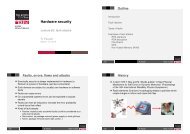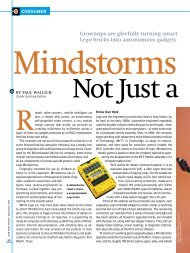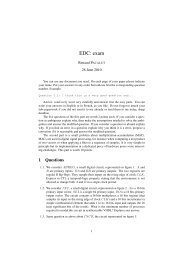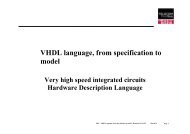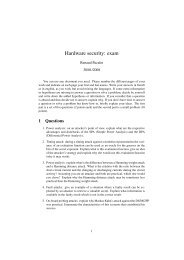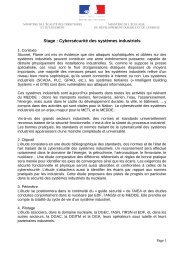UML for Embedded Systems III. Detailed Design - Eurecom
UML for Embedded Systems III. Detailed Design - Eurecom
UML for Embedded Systems III. Detailed Design - Eurecom
Create successful ePaper yourself
Turn your PDF publications into a flip-book with our unique Google optimized e-Paper software.
slide 19<br />
slide 20<br />
Are State Machines Well-Suited <strong>for</strong> Modeling<br />
Real-Time and embedded <strong>Systems</strong>?<br />
� What do you think?<br />
� What should be modeled with state machines?<br />
• In principle, anything that manifests event-driven behavior<br />
• In practice:<br />
- The behavior of individual objects<br />
- Object interactions<br />
� The dynamic semantics of <strong>UML</strong> state machines are<br />
currently mainly specified <strong>for</strong> the case of active<br />
objects<br />
� Note: currently, there is no support in <strong>UML</strong> <strong>for</strong><br />
modeling continuous behavior<br />
(C) Ludovic Apvrille <strong>UML</strong> <strong>for</strong> <strong>Embedded</strong> <strong>Systems</strong> - Fall 2012<br />
Object Behavior: General Model<br />
Initialization<br />
Waiting <strong>for</strong> input<br />
Computing input<br />
Sending output<br />
Termination<br />
(C) Ludovic Apvrille <strong>UML</strong> <strong>for</strong> <strong>Embedded</strong> <strong>Systems</strong> - Fall 2012<br />
Page 10<br />
Note: this is not a<br />
<strong>UML</strong> state<br />
machine but<br />
rather a flowchart<br />
to explain how an<br />
object generally<br />
behaves




